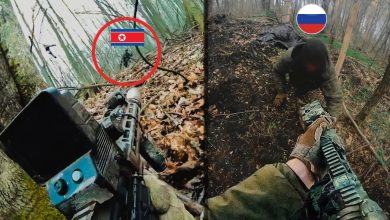Soviet LPO-50 and ROKS Flamethrowers

The earliest known concept of shooting “flames of death” on an enemy dates back to the 7th century when the Byzantine Empire invented “Greek Fire,” a pressurized and flammable liquid that could be launched at enemy warships. How exactly it was fired remains a mystery, as does its chemical composition and notably why it fell out of favor.
Yet, by the 13th century, it had disappeared from the battlefield, and it would take centuries for “flame shooting weapons” to return to the battlefield.
It wasn’t until the years just before the First World War that Richard Fiedler developed the German Flammenwerfer, a variety of flame projecting weapons that could be used by troops on the move. This first flamethrower was used against French troops near Verdun in early 1915, and then was used against British soldiers the following summer.

The British and French responded by developing their own respective flamethrowers, and development of the weapon continued in the interwar period. While the various Western nations sought weapons that emphasized the range and capacity — which meant longer bursts could be fired — the Soviet Union had other plans.
Enter the ROKS-2
In the mid-1930s, Soviet designers Kluyev and Sergeyev created the Rantseviy Ognemyot Kluyeva-Sergeyeva (Kluyev-Sergeyev backpack flamethrower) — also known as the ROKS-2. It is believed an earlier design was refined, and thus the number 2 designation for the weapon. It has been noted for not looking much like a flamethrower at all.
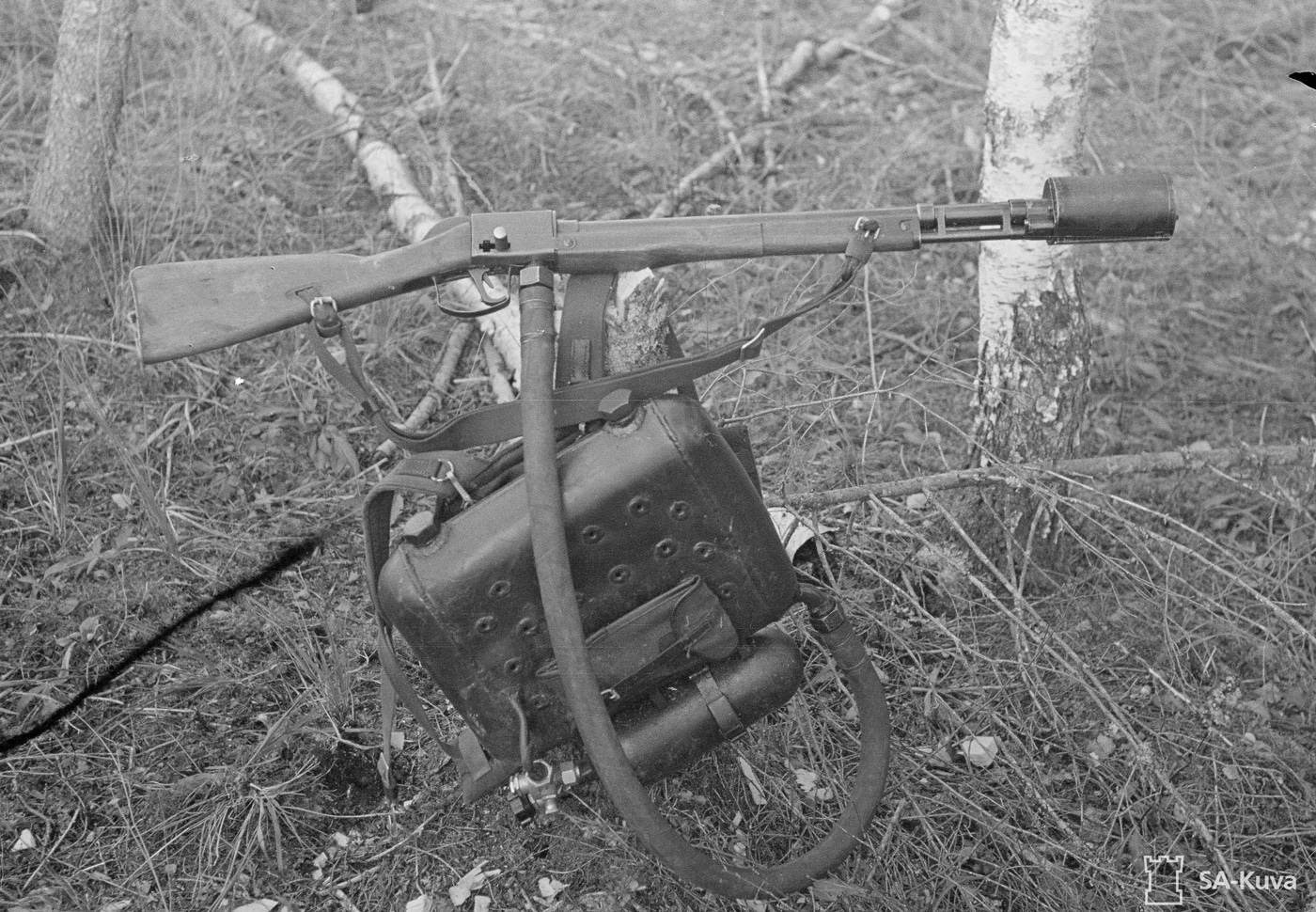
This is because the flame projector was designed to resemble the Soviet Red Army’s Mosin-Nagant Model 91/30 bolt-action rifle, while the fuel and gas tanks were encased in a sheet-metal outer casting that resembled a knapsack. The concept behind this unique approach to disguise the projector was that enemy soldiers, notably snipers, wouldn’t seek to specifically target the flamethrower’s operator. It was understood that during the First World War, the flamethrower became so feared that every weapon was often turned towards it — but this may be hyperbole more than fact.
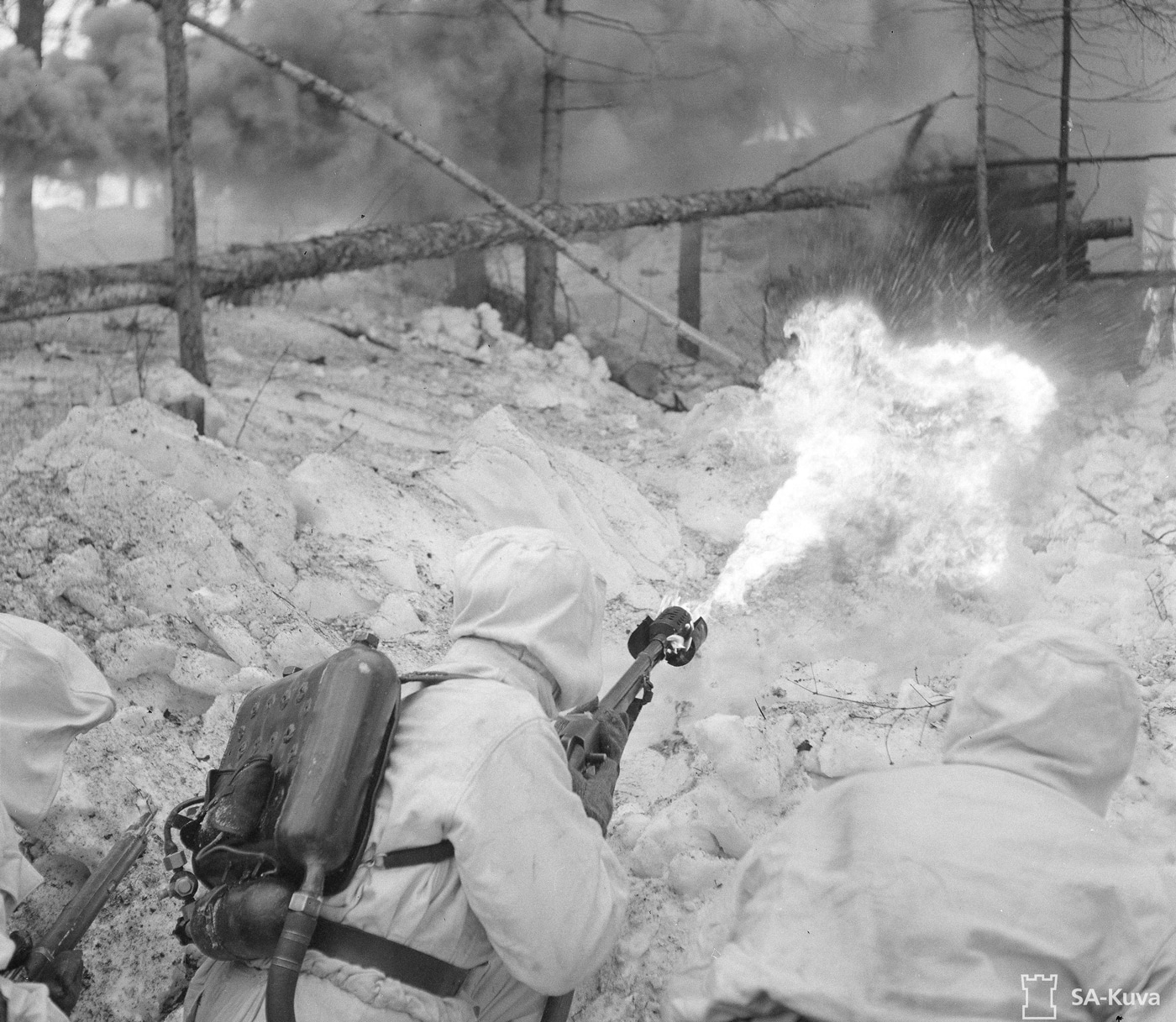
The ROKS-2 had a fuel capacity of two imperial gallons (2.4 U.S. gallons) or nine liters, and weighed around 50 pounds. It was designed to be ignited by the firing of a modified 7.62x25mm Tokarev pistol cartridge. The Soviet weapon proved fairly effective, but following Germany’s surprise Operation Barbarossa invasion in June 1941, the Red Army was forced to develop a simpler design.
ROKS-3 Flamethrower
That resulted in the ROKS-3, which did away with the pack appearance and instead utilized two cylinders on a frame that was still carried on the pack. It had the same fuel capacity as the original model, however. The projector still resembled a rifle, but it was also simpler in design and only vaguely looking like the M91/30. Both models had an effective range of around 45 meters, or just less than 50 yards.
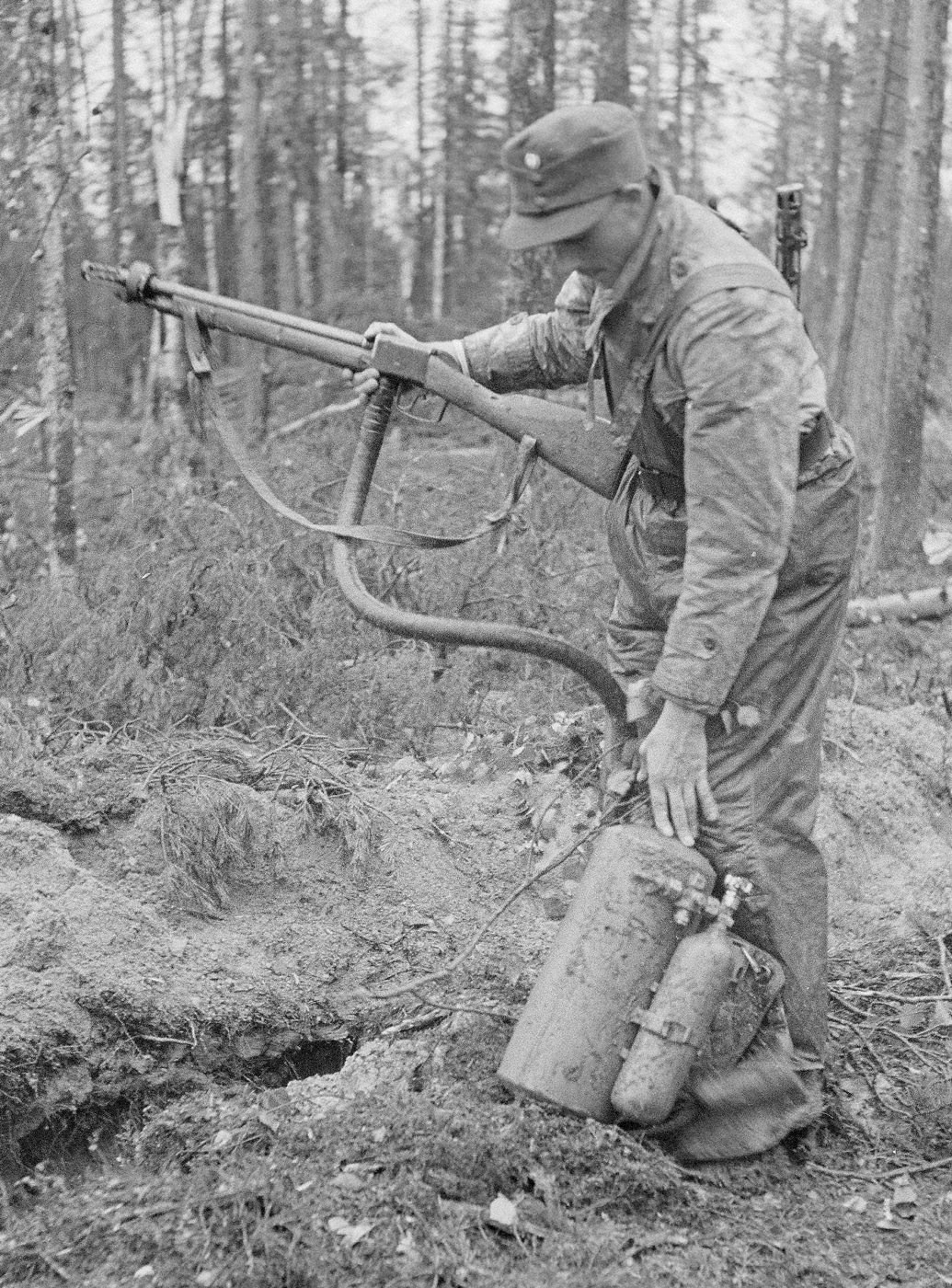
Although production of the ROKS-3 ended by 1943, both it and the preceding model flamethrower remained in service throughout the Second World War. It is unknown how many of either model were produced, but it is believed to be in the low tens of thousands. Only a small handful of either model are known to have survived.
The Finnish Army also produced a version based on captured models known as the Liekinheitin M/41-r, while the North Korean military is reported to have employed a few ROKS-3 during the Korean War with limited success — possibly due to a lack of proper training on the platform.
LPO-50
After the end of the World War II — known to the Soviets as the Great Patriotic War — the Soviet military began development on a modernized flamethrower, and that resulted in the introduction of the Lyogkiy Pyekhotnyy Ognyemyot or Light Infantry Flamethrower. Also known as the LPO-50, it was also designed to resemble a conventional firearm — and it was outfitted with a pistol grip and bipod, which gave it the appearance of a light machine gun of the era. Some sources suggested its light machine gun-style bipod was “totally pointless,” despite others stating that the LPO-50 could be fired from a prone position.
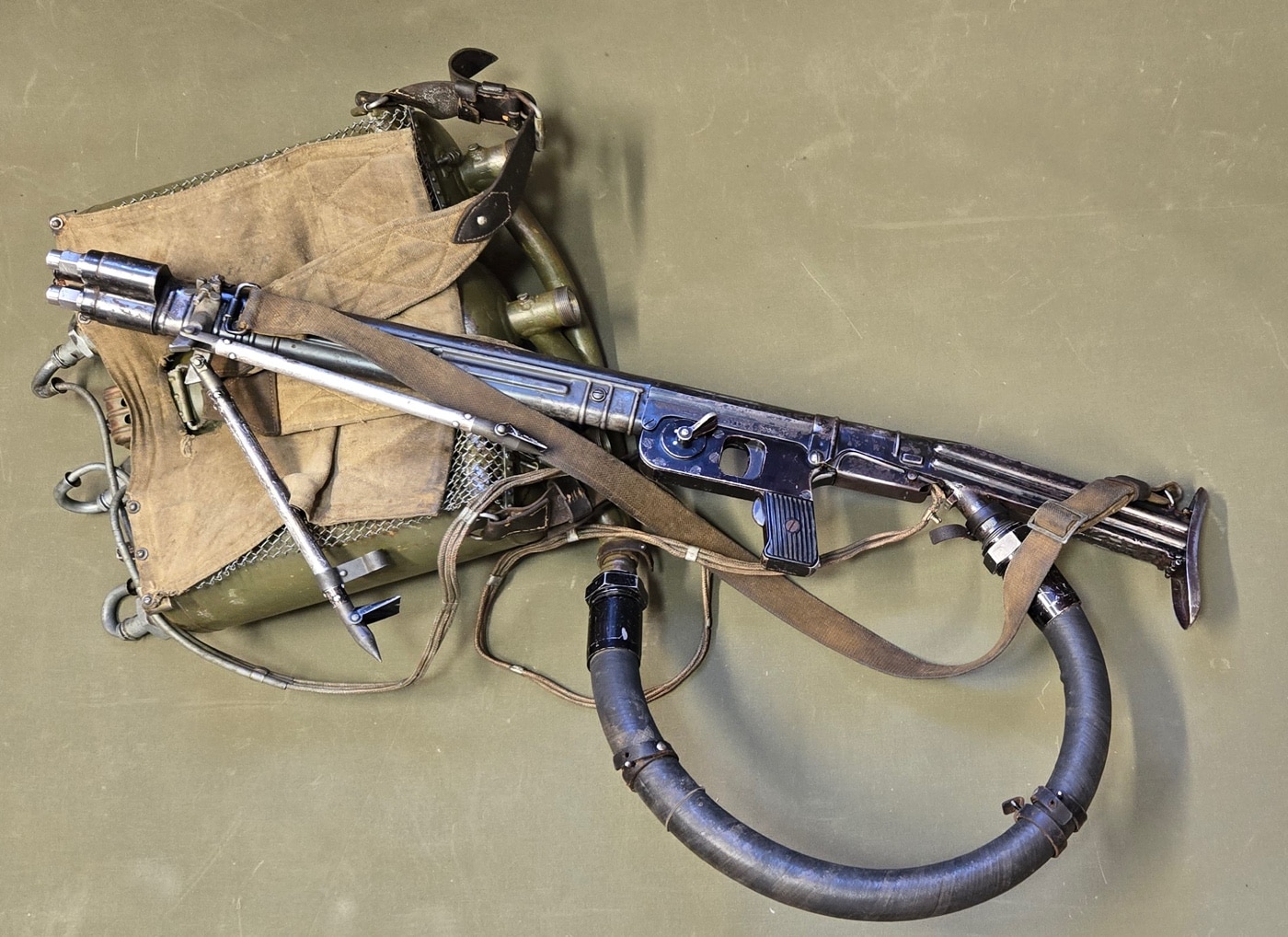
The fuel for the flamethrower was carried in three vertical canisters on the operator’s back, but no effort was made to overly conceal them. In addition, unlike the ROKS-2/3, the LPO-50 was electrically operated, and required he use of multiple 1.5-volt batteries. The electrically detonated compression charge pressurized the fuel, with electrically fired pyro igniters at the muzzle.

The LPO-50 didn’t fire a constant stream of flame, but instead had three distinct two to three second “shots” — while other sources suggest the bursts could last upwards of five to six seconds, but it may have been based on the fuel mix. However, there was also a brief delay between the time the operator pulled the trigger and fuel began to flow.
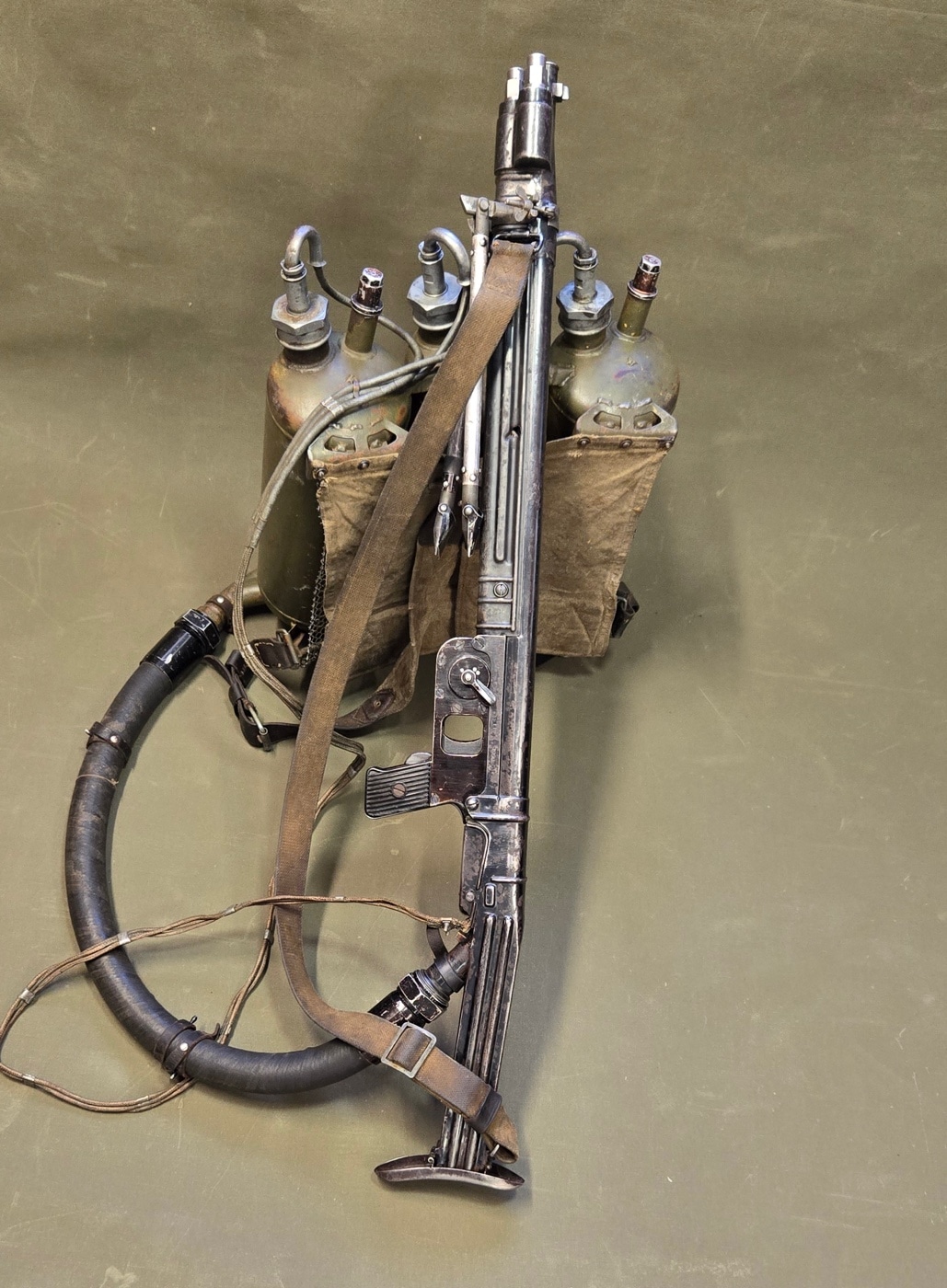
The odd choice of operation came from lessons learned during the Great Patriotic War, where pilot-light igniter flamethrowers had shown to have trouble operating in low temperatures. Moreover, the fuel could consist of ordinary diesel, but a thickened mixture was shown to improve the range considerably. After being expended, the tanks needed to be refilled, with new compression charges installed. The reloading time for all three canisters was eight to 10 minutes.
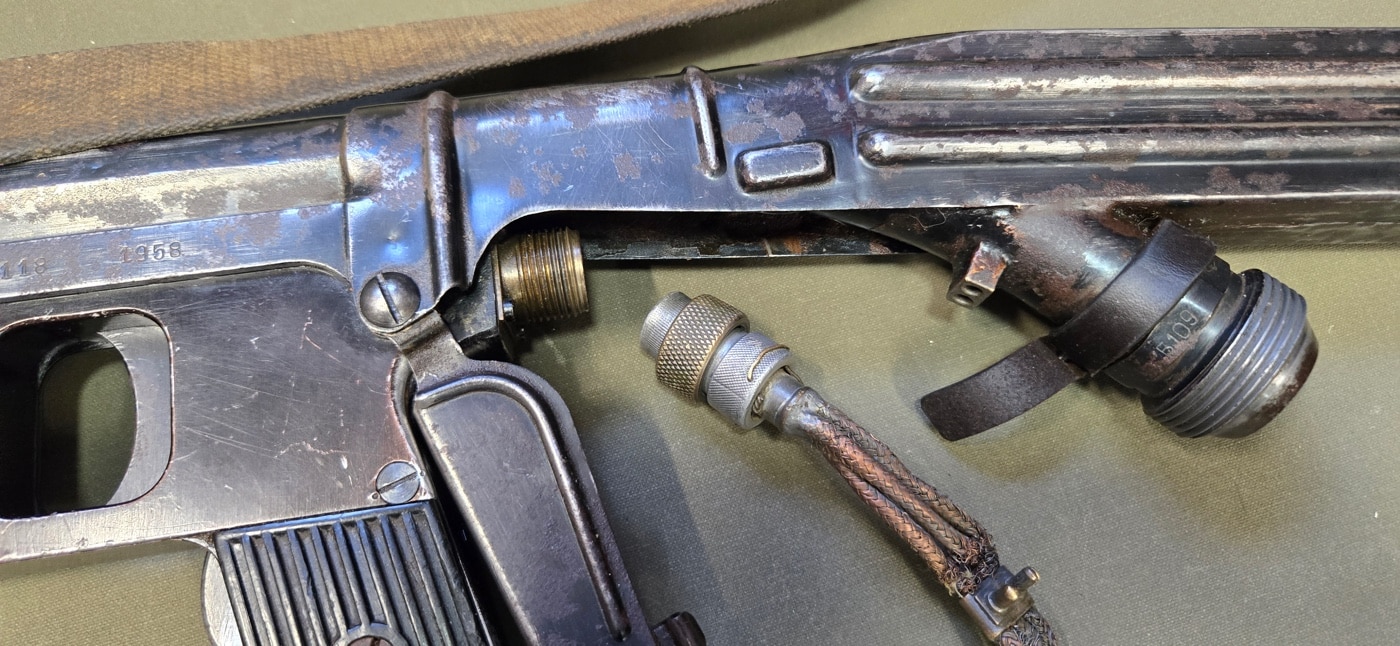
In Soviet Army service, the LPO-50 was carried by specialized chemical warfare units. The flamethrower remained in service until the 1980s, when it was replaced by the RPO Rys napalm rocket launcher. Though unconfirmed, the LPO-50 may have been used in small numbers in the Soviet-Afghan War following the invasion in 1979. At least a few have been found in Afghanistan, which supports that claim.
It may have been the only combat use of the LPO-50 with the Soviet military.
Foreign Use of the LPO-50
An unknown number of Soviet-made LPO-50s were employed by Viet Cong forces during the Second Indo-China War, with it making its combat debut in 1966, and some sources stating it was used at the 1967 Đắk Sơn massacre, where more than 250 civilians were killed, while another was reportedly used on an attack that same year on the United States Marine Corps base at Con Thien.
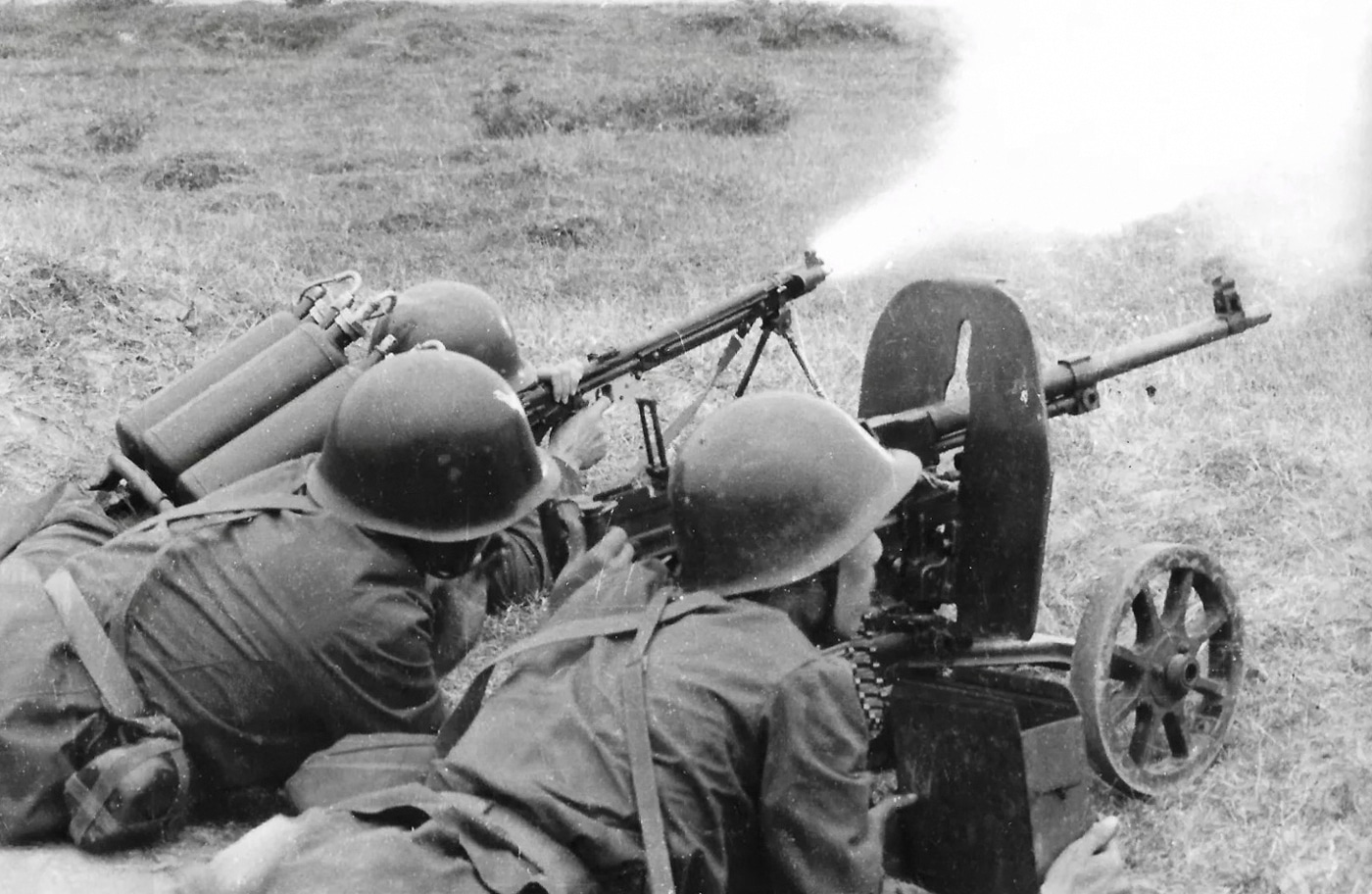
The LPO-50 was exported throughout the Warsaw Pact, with some units being produced in Romania in the 1960s, while the People’s Republic of China produced a licensed copy as the Type 74. That latter variant could be distinguished by having two tanks instead of three of the Soviet model. The Type 74 is still in the People’s Liberation Army (PLA) arsenal in small numbers, but those are likely being phased out of service.
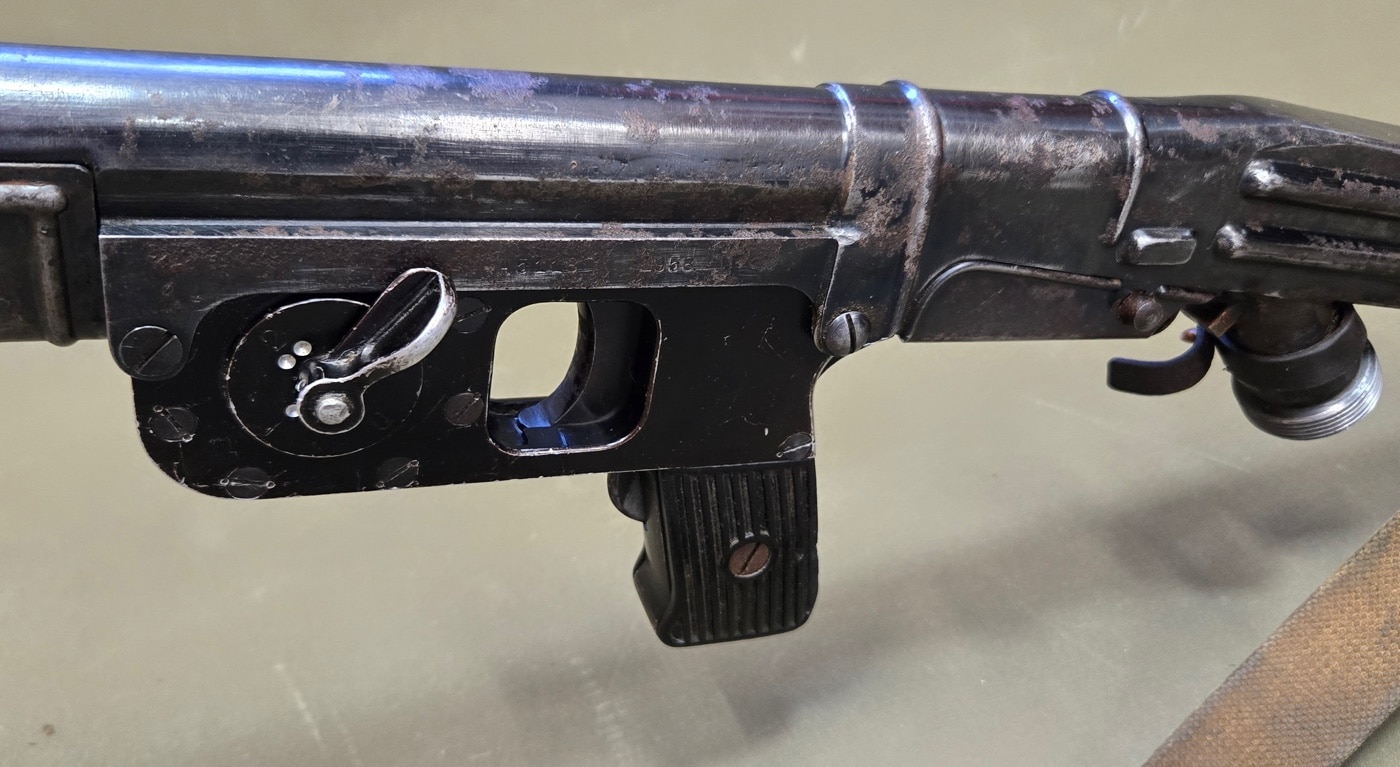
It is believed that the Irish Republican Army also had acquired a small number of the flamethrowers, possibly smuggled via Libya in the 1980s. It was reported to have been used by the IRA attack on a Derryard vehicle checkpoint on December 13, 1989.
Soviet Flamethrowers in Popular Culture
The ROKS-2 has been seen in a handful of films, including a non-firing mockup in 1981’s Across the Gobi and the Khingan, which chronicled the August 1945 Soviet-Mongolian Manchurian Operation against Japanese Kwantung Army — while an LPO-50 stood in for the Japanese Type 93/Type 100 flamethrowers.
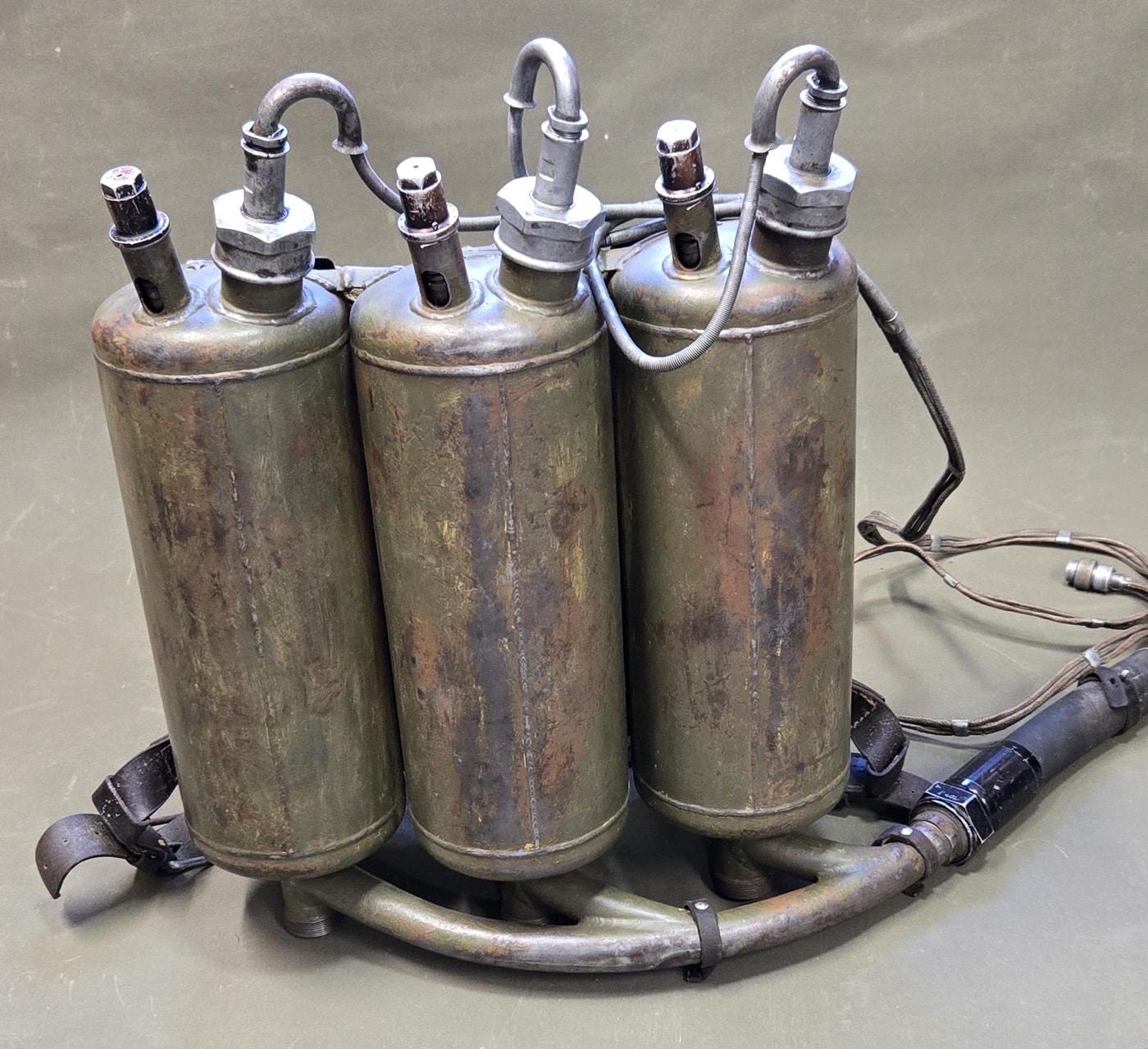
Another ROKS-2 mockup appeared in the 2007 Russian horror film Trackman (Putevoy Obkhodchik), while an original Soviet WWII flamethrower made a surprise appearance in the Netflix original series Stranger Things. It was likely obtained by a prop house that had obtained it in recent years, but has failed to show up in other films or TV shows.
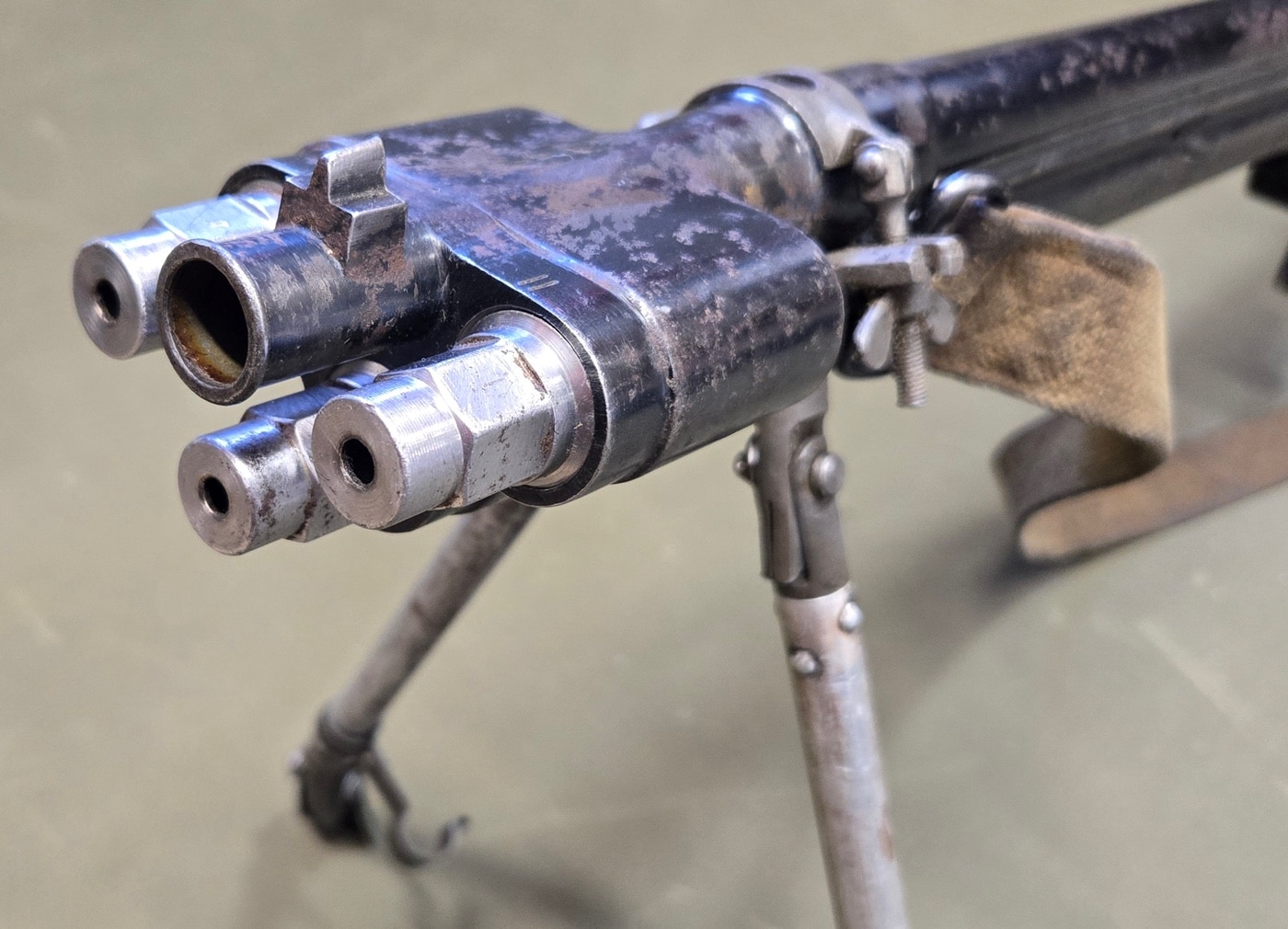
The LPO-50 has also been seen in only a handful of films, including the aforementioned Across the Gobi and the Khingan, while the flamethrower stood in for the Flammenwerfer 35 in the 1985 Soviet war drama Come and See, and more recently in the made-for-TV movie Uprising, which chronicled the Warsaw Ghetto Uprising (April 16 to May 19, 1943). Surprisingly, the LPO-50 hasn’t been seen in any Vietnam War films.
Editor’s Note: Please be sure to check out The Armory Life Forum, where you can comment about our daily articles, as well as just talk guns and gear. Click the “Go To Forum Thread” link below to jump in and discuss this article and much more!
Join the Discussion
Read the full article here





